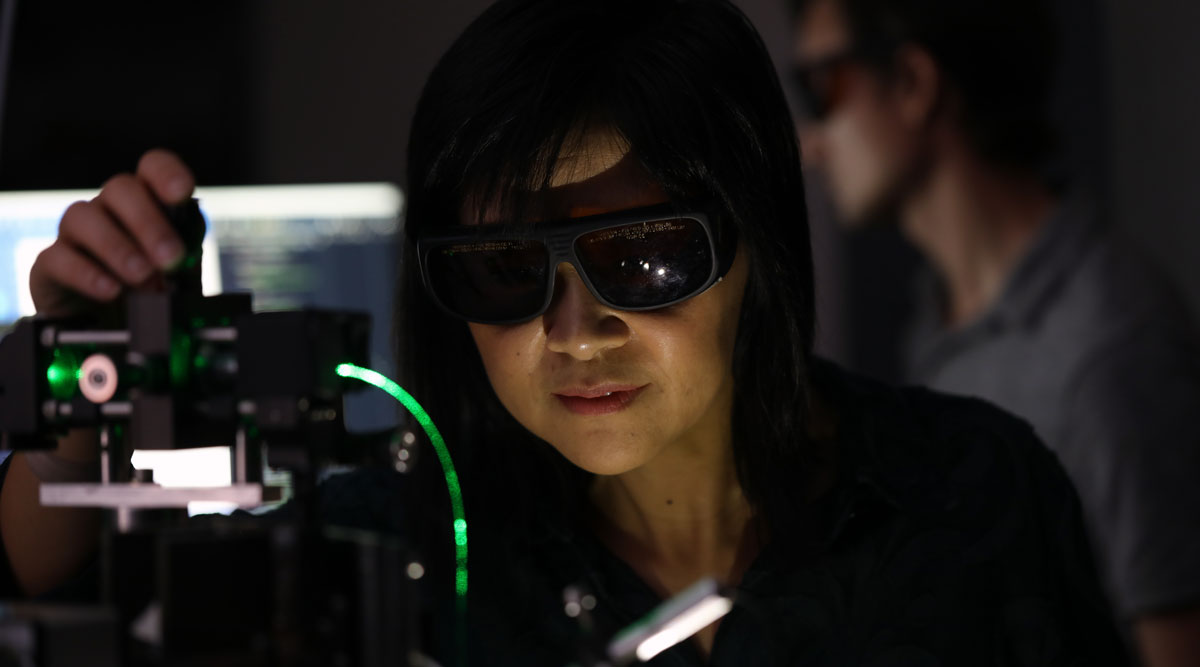Meet the Baylor professor whose invention makes tiny reactions visible

How big is a nanometer? To envision something so small, envision the width of a human hair. Now divide the tip of that hair by 100,000. Now, you’re in the ballpark.
Why does Dr. Zhenrong Zhang work so hard to make chemical reactions at the nanoscale visible? Because the reactions that take place at the level of 1/100,000th of a human hair can help advanced materials scientists like her develop materials that can play a part in more precisely diagnosing diseases and reducing pollutants in energy sources.
To make that possible, Zhang — a Baylor physics professor since 2010 — is working on a groundbreaking optical fiber microscope that would unlock the nanoscale for future generations.
Materials science, via the advanced materials that discipline produces, is revolutionizing fields like medicine and air travel. Advanced materials begin as normal elements, Zhang explains, like metal or oxide. But, through experimentation and synthesis which alter their size, shape and composition, scientists can change the ways that they behave — and, most importantly for the general public, expand the types of problems they can solve. Examples include biosensors that more precisely diagnose disease, optical materials that guide light more effectively, and tools to isolate and remove pollutants from energy sources.
“When you change the dimension or size of a molecule, magic happens,” Zhang says. “For a researcher, it’s amazing to tune materials into the way you want their applications to be — changing their size, their shape, their charge, concentration or composition.”
[LISTEN to a recent Baylor Connections interview with Zhang]
Her microscope has drawn funding from the National Science Foundation and Baylor’s Lab to Market Collaborative. By opening the nanoscale to scientists, Zhang will enable to them to see molecular reactions at the smallest levels, giving them more precise information to use to iterate and perfect understanding of the reactions and, eventually, create better new materials more quickly.
Zhang sees science and exploration as a way to live out her calling.
“There are debates in the science community about whether faith and science go together,” she says. “I would like to live to my full potential as a scientist, and I feel that’s why God led me here and wants me to work on the research that I do. To now be an R1 university demonstrates that faith and science can coexist, and that Baylor is serious in science and serious in our faith.”
Sic ’em, Dr. Zhang!

